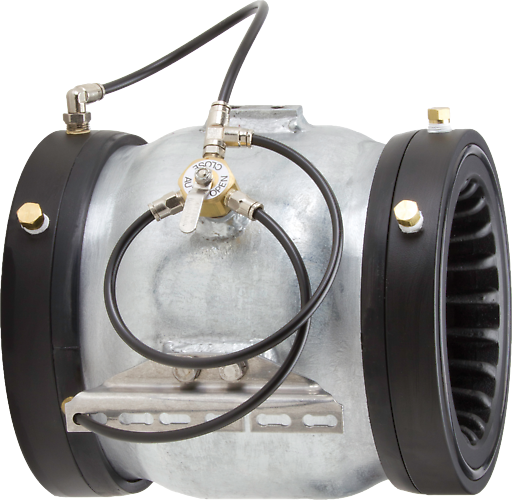Exploring the Capability of Modern Control Valves in Industrial Applications
Exploring the Capability of Modern Control Valves in Industrial Applications
Blog Article

Maximize Power Savings and Convenience With Advanced Structure Automation Controls
In the realm of modern-day architecture and center management, the assimilation of advanced structure automation regulates stands as an essential development. By harnessing the power of automation, buildings can adjust, respond, and evolve in methods that were once unimaginable.
Energy Performance Conveniences
Energy performance benefits can significantly lower energy intake and operational prices in buildings. By carrying out energy-efficient techniques and modern technologies, structure owners and operators can attain considerable savings while also adding to ecological sustainability. One of the primary benefits of enhancing energy effectiveness in structures is the decrease of energy costs. Energy-efficient systems, such as advanced building automation controls, can enhance the usage of sources like air conditioning, lights, and home heating, causing reduced power expenses with time.
Additionally, improved energy performance can lengthen the lifespan of structure tools and systems. By operating a lot more effectively, a/c systems, lighting fixture, and other structure parts experience less deterioration, causing reduced maintenance and replacement prices. Furthermore, energy-efficient structures often regulate greater property worths and rental prices, supplying long-term economic benefits to proprietors.
Furthermore, power efficiency can improve occupant comfort and performance. Properly controlled indoor settings with optimal illumination and thermal conditions develop a more enjoyable and conducive work area, causing improved worker fulfillment and efficiency. In general, the power efficiency advantages connected with innovative building automation controls are diverse, encompassing price savings, ecological stewardship, and resident health.
Boosted Convenience Control
Enhancing comfort control in structure atmospheres calls for a sophisticated assimilation of sophisticated automation systems for optimal passenger wellness. By making use of sophisticated structure automation controls, facilities can customize the indoor environment to satisfy the specific requirements and preferences of owners. control valves.
Improved convenience control goes beyond basic temperature level adjustments. It includes attributes such as individualized settings, tenancy sensing units, and natural light usage to develop a vibrant and receptive environment. By integrating these innovative controls, buildings can not only boost comfort yet likewise boost energy performance by optimizing system operations based upon real occupancy and usage patterns. Inevitably, prioritizing owner comfort with advanced automation systems causes a more satisfying and much healthier interior environment.
Functional Efficiency Improvements

Additionally, the application of real-time monitoring and analytics devices allows building operators to recognize energy inefficiencies and functional abnormalities immediately. By continuously checking power use patterns and system efficiency metrics, adjustments can be made in real-time to optimize energy consumption and make sure peak operational performance. control valves. Furthermore, incorporating need feedback approaches right into structure automation controls can further improve operational efficiency by dynamically changing power use based on grid problems and rates signals
Indoor Climate Optimization
Effective interior environment optimization is an essential facet of structure automation controls, making sure occupants' comfort and wellness while making best use of energy financial savings. By utilizing sophisticated sensing units and controls, building automation systems can constantly keep an eye on and change temperature level, moisture levels, air top quality, and ventilation to create an optimum interior setting. Keeping consistent and comfy problems not just enhances owner contentment but likewise improves performance and overall well-being.
Interior climate optimization also plays a crucial function in power efficiency. By fine-tuning air conditioning, ventilation, and heating systems based upon real-time information Click This Link and tenancy patterns, building automation controls can significantly decrease energy usage - control valves. For example, carrying out techniques such as demand-controlled ventilation and thermal zoning can aid decrease energy waste while guaranteeing that each area of the structure gets the required conditioning.

Sustainable Environment Creation
Structure automation regulates not only optimize interior environment conditions for energy performance and occupant convenience but also lay the foundation for creating a sustainable setting through strategic monitoring of systems and sources. By incorporating advanced building automation innovations, such as sensing units, actuators, and intelligent software program, facilities can check and adjust power usage in real-time to decrease waste and decrease their carbon impact. These systems allow anticipating maintenance, recognizing prospective concerns before they rise and optimizing tools efficiency to improve longevity and effectiveness.
Furthermore, sustainable setting creation prolongs beyond energy administration to encompass water conservation, waste decrease, and interior air quality enhancement. Structure automation controls can regulate water usage, detect leaks, and make certain proper waste disposal methods, contributing to total sustainability efforts. Additionally, by keeping an eye on and regulating ventilation and filtration systems, these technologies enhance resident health and wellness and efficiency while reducing energy intake related to a/c procedures.
Conclusion
To conclude, advanced building automation regulates deal substantial advantages in terms of energy cost savings, comfort control, operational efficiency, interior environment optimization, and developing a visit site lasting environment. By executing these controls, buildings can accomplish optimal performance while minimizing energy usage and enhancing passenger convenience. It is noticeable that making use of advanced automation modern technology is crucial in improving structure efficiency and developing a much more lasting future.
Power effectiveness benefits can significantly minimize energy intake and operational prices in buildings. Overall, the power efficiency advantages connected with advanced building automation controls are multifaceted, including cost financial savings, environmental stewardship, and occupant wellness.
In addition, incorporating demand action approaches right into structure automation controls can further enhance operational effectiveness by dynamically readjusting power use based on grid problems and prices signals.
Structure automation manages not just enhance interior environment problems for energy effectiveness and passenger convenience yet likewise lay the structure for developing a lasting environment through critical monitoring of systems and resources.In conclusion, advanced structure automation controls offer considerable advantages in terms of energy financial savings, convenience control, operational effectiveness, interior climate optimization, and developing a lasting setting.
Report this page